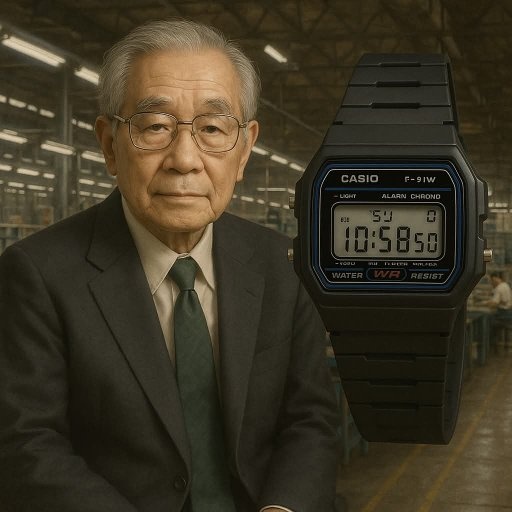The Enduring Legacy of Casio Watches: Built to Last, Not to Impress
Did you know Casio was created not to dazzle but to endure? Discover how a humble idea sparked the creation of one of history’s most resilient watches.
The Origins: A Post-War Vision
In 1946, post-World War II Japan was rebuilding. Tadao Kashio, an innovative engineer, invented a practical cigarette holder that allowed users to smoke without burning their fingers. This small invention generated the funds to launch something far greater.
Together with his three brothers, Kashio founded Casio Computer Co., Ltd. Their first breakthrough wasn’t a watch but a calculator designed to solve real-world problems. This practical, problem-solving ethos would later define their approach to watchmaking.
A Tool for Life, Not a Status Symbol
While Swiss watchmakers focused on luxury, crafting timepieces with polished metals and sparkling diamonds, Tadao Kashio had a different vision:
- What if a watch could survive a fall from your wrist?
- What if it could assist students during exams, guide workers through shifts, or support scientists in the lab?
Kashio prioritized function over flash, strength over sparkle. His goal was to create a reliable, purpose-driven watch for everyday life.
The Casiotron: A Milestone in Timekeeping
In 1974, Casio introduced the Casiotron, the world’s first digital watch with a fully automatic calendar. More than just a timekeeper, it understood time, automatically adjusting for months with 30 or 31 days. The Casiotron embodied Casio’s philosophy: innovation with purpose. It wasn’t about impressing—it was about lasting.
A Legacy of Innovation
Casio’s commitment to innovation continued to evolve:
- 1976: Casio released a model with world time, alarm, and stopwatch functions, setting a new standard for versatility.
- 1977: They pioneered the use of resin, creating lighter, more durable watch cases.
- 1983: Engineer Kikuo Ibe introduced the G-SHOCK, a watch engineered to withstand a 10-meter fall and deliver 10 years of reliable performance.
Casio wasn’t chasing trends—it was building tools that showed up, day after day, in any condition.
From Classrooms to Battlefields
Casio watches became indispensable across all walks of life:
- Students timed exams with precision.
- Professionals tracked meetings and travel schedules.
- Adventurers relied on them through storms, deserts, and beyond.
From first dates to job interviews, hiking trails to laboratories, Casio watches were there—functional, dependable, and unpretentious. No gold, no diamonds—just purpose, accuracy, and resilience.
Why Casio Remains Timeless
In a world of fleeting trends, Casio endures because it was never about fashion—it was about trust. Casio’s philosophy is simple: respect time, and people will respect the watch.
As Tadao Kashio once said, “Time is precious. It deserves a watch that respects it.”
Casio doesn’t shine—it endures.


.png)